Coffee growing area
Brazil (South America)
The largest coffee producer, which accounts for 1/3 of the world's coffee consumption, has a place in the global coffee market, although Brazil faces several times more natural disasters than other regions. but its acreage is enough to make up for it. There are many kinds of coffee here, but its industrial policy is large and cheap, so there is not much premium coffee, but it is a good choice for mixing other coffees. One of the most famous is Sandos Coffee, which tastes mellow and neutral. It can be boiled directly or mixed with other kinds of coffee beans to form a comprehensive coffee. It is also a good choice. Other kinds of Brazilian coffee, such as Rio and Parana, can be produced in large quantities because they do not need too much care. Although the taste is rough, it is a kind of high-quality and inexpensive coffee, which has its own standards because it is distributed all over the country and its solid quality varies (NO.2 ~ NO.8 according to the number of sundries, NO.13 ~ NO.19 according to the size of beans, six grades according to taste). Almost all Arabica species are of good quality and stable in price. The most famous one is "Brazil-Santos", which has been a necessity of blended coffee and is familiar to the public since ancient times. Recently, the "Guilma Cup" is also highly rated.
● quality beans: Sangduo NO.2, size NO.18
The characteristics of ● taste: mild, bitter medium, soft flavor.
The best fried culture degree of ●: medium fried culture.
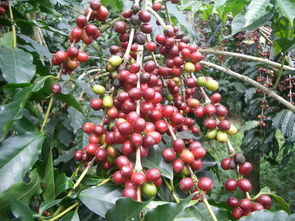
● Colombia (South America)
This is the second largest coffee industry after Brazil and is also a leader in the Columbia-Maird Group (Colombia, Tanzania, Kenya). In addition, there are Asa Maird, Anwar Schroeder-Arabica, Robsta). The more famous producing areas, such as "Medellin", "Manizarez", "Bogota" and "Armenia", all the coffee beans cultivated are Anicabi species, which are quite rich in taste and stable in quality and price. The fried coffee beans are even bigger and more beautiful. From low-grade products to high-grade products can be produced, some of which are rare good goods in the world, the taste is so mellow that people can't put it down.
● quality beans: Columbia-Spremer / Echesellon (other than Spremer, larger particles)
The characteristics of ● taste: sour, bitter, sweet and strong, the color is like a good wine.
The best frying degree of ●: medium ~ depth
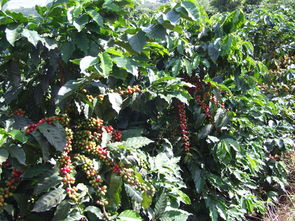
● Mexico (Central America)
This major coffee producer in Central America, the coffee here is comfortable and charming. The Mexican coffee selected are Coatepec, Huatusco and Orizaba, of which Cottpe is considered to be one of the best in the world. The coffee cultivation belt of this country is similar to Guatemala in the south in terms of geographical and climatic conditions, so it is included in the scope of "China and the United States". The main producing areas are in Goa DiBuick, Oaxaca and other states, especially the water-washed coffee beans from the highlands, which have excellent aroma and sour taste. According to the elevation, the specifications are divided into three categories: Aldora (4000 ~ 4200 ft), Prima-Labado (2800-3300 ft) and Boone-Labado (2100-2500 ft). Most of the products are sold to the United States.
● quality beans: Mexico-Aldora
The characteristics of ● taste: the grains are large and sour and sweet, with strong flavor.
The best frying degree of ●: medium ~ depth
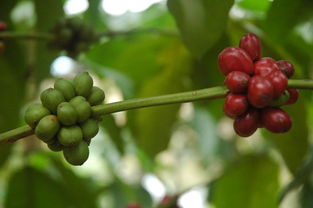
● Guatemala (Central America)
The central region of Guatemala is home to world-famous coffee with excellent flavor. Most of the coffee beans here have charcoal flavor and cocoa flavor, but their acidity is slightly stronger. These are the most familiar coffee beans in Japan, and the first place of origin is in San M á rquez, which is close to the mountains of Mexico. The second place of production is Caesar Denango, who is difficult to make. Other brothers and gangs and Antigua are also very famous. Slightly sour, mellow and smooth, it is the best material for mixed coffee. The classification is divided into seven grades according to the elevation. The higher the origin, the more mellow the coffee beans are, while the coffee beans from the lower areas are of lower quality.
● quality beans: Guatemala-SHB
The characteristics of ● taste: bitter and fragrant, good taste.
The best frying degree of ●: depth
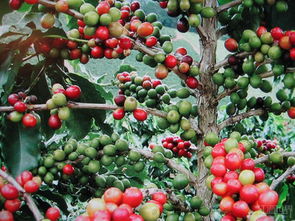
● El Salvador (Central America)
It is listed as the producer of the Asa-Merdo Group, along with Mexico and Guatemala, and is fighting for the top one or two places in China and the United States with other countries. The highlands of origin are large coffee beans of all sizes, which are fragrant and mild in taste. It is also divided into three grades according to elevation: SHB (strictly high grown) = highland, HEC (high grown central) = mid-highland, and CS (central standard) = lowland.
● quality beans: El Salvador-SHB
● taste characteristics: sour, bitter, sweet mild and moderate.
The best frying degree of ●: medium ~ depth
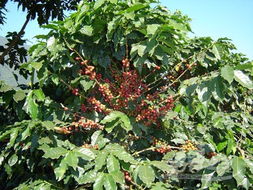
● Honduras (Central America)
The washed coffee beans in the mountain areas are well received, while the coffee beans produced in the lowlands are of lower quality. Well-known producing areas are Santa Barra, Gracias, Komayagya in the east, and Chortika near Nicaragua. Coffee beans range in size from medium to large and are characterized by a mild taste. The quality products here are also marked up and divided into three grades.
● quality beans: Honduras-SHB
The characteristics of ● taste: sour and slightly sweet.
The best frying degree of ●: medium ~ depth
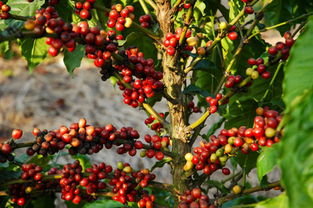
● Costa Rica (Central America)
The coffee beans produced at the high latitudes of Costa Rica are famous in the world, full-bodied, mild in taste, but extremely sour. The coffee beans here have been carefully processed, which is why they have high quality coffee. The famous coffee is produced in the Central Plateau (Central Plateau), where the soil consists of successive layers of volcanic ash and dust. The first-class fragrance is strong and sour, and it is highly valued. The place of production can be roughly divided into three areas: the Pacific coast, the Atlantic coast and the middle zone, and each is graded according to its elevation. All the coffee beans are quite large, especially the sour and fragrant coffee beans produced in the high areas of the Pacific coast are the first-class coffee beans, and there is a new brand of "Clarke Hill". The coffee beans of the lowlands along the Atlantic coast are sour rather than mellow and have nothing special.
● quality beans: Costa rica-Clara Mountain
The characteristics of ● taste: moderate acidity and mellow taste.
The best frying degree of ●: medium
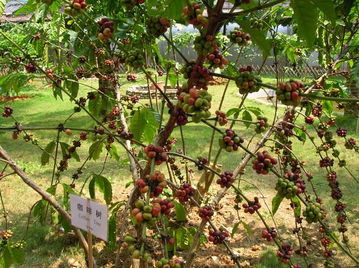
● Cuba (West Indies)
Cuba, famous for producing sugar, tobacco and coffee, is a republic made up of Cuba, the largest island in the West Indies, and other affiliated islands. Coffee was introduced by the French from Haiti in the mid-18th century. Coffee beans are characterized by medium-sized, bright green, high-quality coffee beans. The grades are divided into ETL (extra Super Grade), TL (Middle Pole) and AL (ordinary) according to the size of coffee beans. "Clydale Mountain" is Cuba's proudest high-quality, large-shaped coffee beans.
● quality beans: Cuba-Mount Crisdale
The characteristic of ● taste: the taste is stable. A balance of sour, bitter and sweet.
The best frying degree of ●: medium
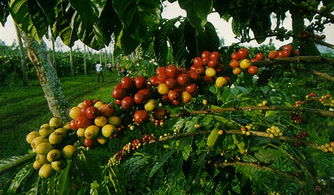
● Jamaica (West Indies)
Jamaica's national treasure, Blue Mountain Coffee, is perfect in all respects, just like wine, many wineries are now bought by the Japanese. The Japanese have bought most of the Jamaican coffee in recent years, so it is very difficult to buy it in the market. It is said that it has not been available in Britain for four years, and the spending power of Easterners is really staggering. Jamaica is a republic of large and small islands in the Caribbean. Coffee is cultivated on the Yumai slope on Hengduan Island, and the producing area can be divided into three areas: BM (Blue Mountain) and HM (Alpine) PW (Plame washed coffee beans), which are also the brand names of coffee. The ranking of quality and price is 1, 2, 3, and the ranking of production is 3, 2, 1. Among them, the flavor, aroma, strong and sour taste of "Blue Mountain" are all very average and highly appraised. Almost all the products are sold to Japan.
● quality beans: blue Mountain / High Mountain
The characteristics of ● taste: it has the same sour, bitter, sweet and good flavor.
The best frying degree of ●: mild to moderate.
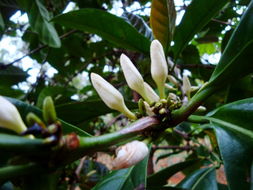
● Kenya (Africa)
Kenya grows high-quality Arabica coffee beans, which absorb almost the essence of coffee cherries and are very popular among Europeans, especially in the UK. Kenyan coffee has surpassed Costa Rican coffee and become one of the most popular coffee. Located in Kenya below the equator of East Africa, the coffee beans planted are high-quality Arabica seeds. The size of beans is medium to large, very thick and delicious, and the acidity is also medium. The grade is divided into seven grades according to the size of the coffee beans, and the taste is divided into six grades from top to bottom. In the taste of "Kenya AA" is particularly well received.
● quality beans: Kenya AA (double A)
The characteristics of ● taste: strong sour and fragrant, the favorite of the German.
The best frying degree of ●: depth
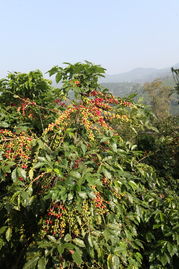
● Ethiopia (Africa)
Arabian coffee is the hometown of Arabian coffee, which grows at high latitudes and needs a lot of manual care. There is the famous Esopiamoka, which has a sour taste similar to that of wine, fragrant and productive. Unfortunately, some farmers still do not understand the benefits of picking fruit and allow them to fall behind and pick it up from the ground, but in recent years, due to the continuous expansion of the market, coffee industry is committed to improving harvesting and processing methods, hoping to increase production. Coffee is famous for its origins from Canada in the southwest and Xidamo in the south. In addition, the Eastern Highland Hara is also famous for its coffee. The bean is small and fragrant, and the special name of "Hara-Mocha" and "Longgubeli" has a unique flavor, usually only known as "mocha". The mixed proportion of one defective bean in its specification is divided into G (geade) 1 ~ G8. Recently, the most eye-catching one is the high-quality "Water Wedding event-Ethiopia".
● quality beans: Hara BG (board grain)\ LB (long berry)
The characteristics of ● taste: both fragrant and sour, washing coffee has a strong sour taste.
The best frying degree of ●: medium ~ depth
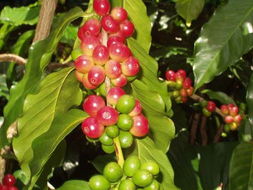
● Yemen (Africa)
There was a whirlwind of mocha coffee in Yemen, which blew a whirlwind around the world, but unfortunately, the good times were not very good. Under the political turmoil and unplanned planting, the production of mocha was very unstable. Having said that, mocha is still the soul of matching other coffee beans or mixed coffee beans. Yemen, commonly known as Arabia, is the birthplace of Arabica species, once known as "mocha coffee", but it was all the rage for a time, but now it is no longer a grand occasion. But its flavor such as alcohol class, full-bodied and mellow characteristics, one is quite favored by consumers after-dinner coffee. Together with the coffee produced in Brazil and Colombia, it is the three swordsmen who have been chosen as blended coffee. Matari produced in the Bani Matar region and Sanani produced in Sanaya are also quite famous, and the Golden Matari is also produced in Bani Matar.
● quality beans: Golden Horse Tali
● taste features: slightly sour and strong aftereffect, but also sweet taste.
The best frying degree of ●: medium ~ depth
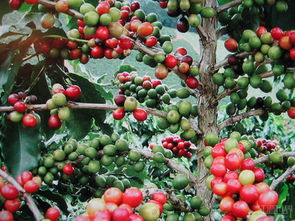
● Indonesia (Southeast Asia)
When it comes to Indonesian coffee, we must not miss the high-end Mantenin of Sumatra, which has a unique fragrant taste, slightly acidic taste and can be said to be the best in the world. In addition, Arabian coffee produced in Java is the favorite of Europeans, which is sweet in bitterness and sour in the middle of it, which lasts for a long time. The main producing areas are Sumatra, Java and Sulawesi. 90% of them are Robbosa species, which can be rated as the first in the world in quality. Sumatra is best known for its rich, palatable and most advanced "Mantenin". However, importers have repeatedly criticized them for their poor quality and difficulties in processing and preservation. In addition, "Jiayushan" is also produced in the north of the island, while "Java-Arabica" in Java has a good sour taste, especially loved by the Dutch. Sulawesi Island is produced by a large grain of "Kalosi", represented by Delaga in the mountains of the southwest (elevation 1200 meters).
● quality beans: Sumatra-Mantenin
The characteristics of ● taste: bitter and rich, but also sweet.
The best frying degree of ●: depth
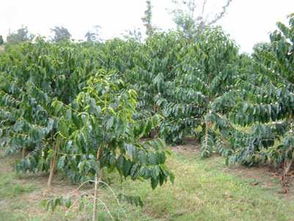
● Hawaii (Hawaii)
To visit Hawaii, in addition to the beautiful beach, don't forget the Hawaiian coffee bean-Kona. The palate is sweet with the acidity of a pleasant wine, very special. It is Kona, which is produced on the southwest coast of Hawaii, which is the most traditional and famous coffee in Hawaii. However, because the production here is not high, but the cost is surprisingly high, coupled with the increasing demand for individual coffee in the United States and other places, its unit price is not only getting higher and higher, but it is also not easy to buy. The disaster of coffee in Hawaii was started by Japanese immigrants, but now most baristas have changed to grow walnuts, resulting in a sharp drop in coffee production. However, the well-known "Hawaii-Kona" is a mellow and sour coffee bean. In particular, the coffee beans on the perennial coffee tree, slightly sour can brew a unique flavor, known as "many years can be that", well received. In particular, aged beans, like brewed, have a unique soft and sour taste. "Old age" is very popular.
● quality beans: Hawaii Kona
● taste features: strong acid, mellow, all have tropical flavor.
The best frying degree of ●: medium ~ depth
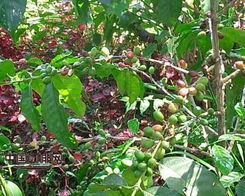
● Angola
This is the fourth largest coffee industry in the world, but it produces only a small amount of Arabian coffee, which is of high quality, but unfortunately, its annual output is extremely unstable due to its political upheaval.
● superior quality bean: Arabian gram
The characteristic of ● taste: both fragrant and sour.
The best frying degree of ●: medium ~ depth
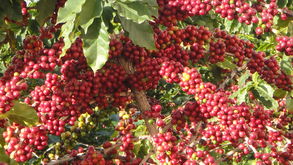
● Peru
Peruvian coffee, a rising star, is gradually opening up its popularity and entering the world. It is mostly planted in high-altitude areas, the planned planting makes the yield greatly increased, the taste mellow, the right acidity, more and more people like it.
● quality beans: Peru
The characteristics of ● taste: the taste is mellow and the acidity is right.
The best frying degree of ●: medium
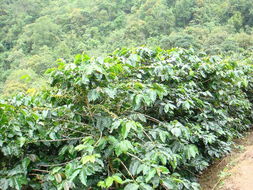
Important Notice :
前街咖啡 FrontStreet Coffee has moved to new addredd:
FrontStreet Coffee Address: 315,Donghua East Road,GuangZhou
Tel:020 38364473
- Prev

Analyze the principle of the coffee machine mocha pot and the correct use steps
Recently, when I communicated with some brown friends, I talked about the mocha pot. This friend has been in contact with coffee for a long time and has certain attainments in tasting coffee. What surprised me was that the way my friend used the mocha pot was wrong. As a result, I communicated with more than a dozen friends who had used the mocha pot and found that most of them could not use the mocha pot correctly. ?? The main reason is
- Next
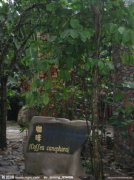
Coffee growing environment
A warm climate with temperatures ranging from 15 ° C to 25 ° C, and rainfall of 1500 mm to 2000 mm throughout the year, at the same time, its rainfall should be able to match the flowering cycle of coffee trees. Of course, in addition to seasonal and rainfall coordination, there must be fertile soil. The soil most suitable for coffee cultivation is fertile, well drained soil containing pozzolanic matter. In addition, although sunlight is coffee
Related
- Beginners will see the "Coffee pull flower" guide!
- What is the difference between ice blog purified milk and ordinary milk coffee?
- Why is the Philippines the largest producer of crops in Liberia?
- For coffee extraction, should the fine powder be retained?
- How does extracted espresso fill pressed powder? How much strength does it take to press the powder?
- How to make jasmine cold extract coffee? Is the jasmine + latte good?
- Will this little toy really make the coffee taste better? How does Lily Drip affect coffee extraction?
- Will the action of slapping the filter cup also affect coffee extraction?
- What's the difference between powder-to-water ratio and powder-to-liquid ratio?
- What is the Ethiopian local species? What does it have to do with Heirloom native species?

